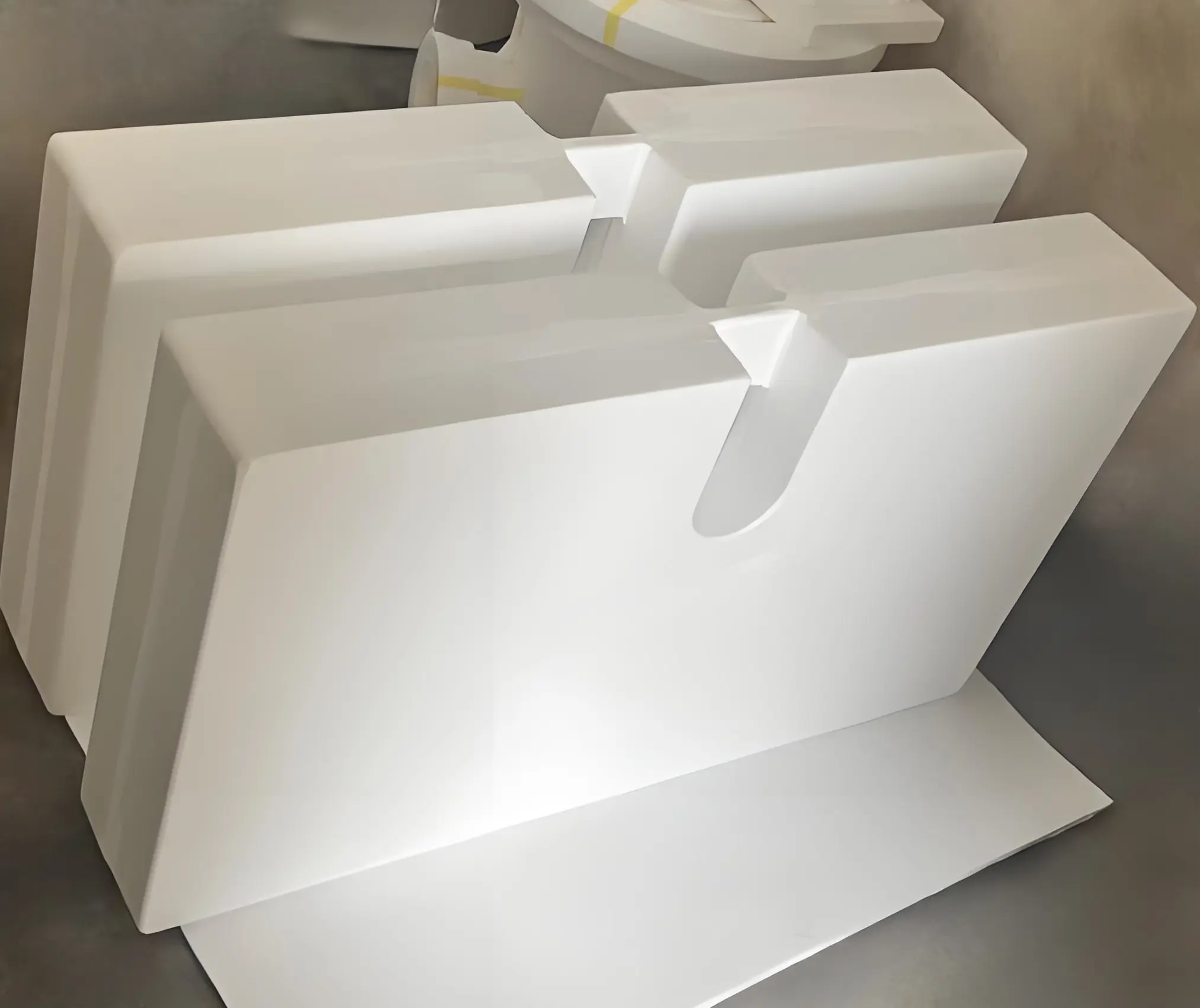Lost foam castings deformation refers to the geometric shape of the castings not being consistent with the drawings. For example, the castings are bent, elliptical, and have uneven wall thickness. The deformation of lost foam castings is caused by improper operation and lax process discipline in the pre-foaming, mold making, coating, and sand filling molding processes.
Causes of lost foam castings deformation
(1) EPS raw materials are unqualified or the beads are unqualified after pre-foaming;
(2) The process of pattern making and assembling white parts causes the pattern to deform;
(3) Improper operation of refractory coating preparation and coating;
(4) Improper operation of sand filling molding and vibration compaction;
(5) Partial heating of the pattern during pouring or unreasonable vacuum distribution in the mold. When the above factors occur alone, casting deformation may occur but will not be very serious; if multiple factors are superimposed on each other at the same time, casting deformation will greatly increase.
Technical measures to prevent casting deformation
Foaming agent
The content of foaming agent in EPS raw materials should be between 6.0% and 6.5%, and at least not less than 5.5%. The beads should be smooth and uniform in size.
Model making
① During pre-foaming, after the steam pressure reaches 0.04MPa, drain the water in the pipeline and the steam pre-foaming machine. If the heating steam entering the steam pre-foaming machine carries a lot of water, or the condensed water of the heating steam cannot be discharged in time, the EPS particles will have a high water content during the secondary foaming and pressing. When the drying (i.e., aging) time is short or the aging temperature is low (<20-25°C), the beads are easy to form small pieces or lumps. The model made at this time is very easy to deform.
② The aging time of pre-expanded beads should generally be 10-12h. If the aging time of pre-expanded beads is not strictly controlled, the deformation of the model size is difficult to control.
③ For pipe fittings with a wall thickness of 3.5-4mm, the density of pre-expanded beads should be controlled at about 26g/cm3.
④ Before molding, check whether the mold exhaust plug is unobstructed and whether the filling pressure reaches above 0.05MPa. Otherwise, it will affect the fullness of the filling and form local bead patterns, reduce the strength of the pattern, and cause the pattern to deform during maturation and in subsequent processes.
⑤ Using a higher steam pressure during molding can reduce the shrinkage of the pattern during maturation.
⑥ Control the cooling degree of the pattern after molding during pressing. Before taking the mold, the pattern should be fully cooled to below 80℃ and the secondary foaming should be terminated to obtain a pattern with good dimensional stability and prevent the pattern from deforming during taking the mold.
⑦ The pattern after taking the mold should be dried at 50-60℃ for 3-8h to ensure maturation.
Bonding and mold assembly process
① The quality of the adhesive directly affects the quality of the mold. Before bonding, the parting surface of the pattern should be polished flat and vertical. Use light and uniform force during bonding.
② For (thin-walled) castings with loose structures and low rigidity, process supports can be added during mold assembly to improve the rigidity of the model.
③ When applying the coating, choose a suitable location so that the inside and outside of the model are immersed in the coating at the same time.
④ The coating thickness is appropriate. The coating layer can enhance the surface strength of the model and prevent the model from being deformed during transportation and molding.
⑤ Place it properly during drying to prevent the model from being deformed due to uneven force.
Sand filling molding process
① The distance between the sprue and the casting and between the model clusters should not be too close, generally 90-120mm, which is the basic condition to prevent uneven heating of the model.
② The molding sand temperature is controlled below 50℃ to prevent the model from being locally deformed during the sand filling molding operation;
③ Reasonable buried mold position, the large plane of the model is in a vertical or inclined pouring position.
④ The height of the filling layer inside and outside the model should be uniform when filling the sand.
⑤ Reasonably select the vibration process parameters to make the dry sand fill all parts of the model to prevent the local tightness of the dry sand. Excessive vibration will cause the model to deform.
Pouring process
① Keep the iron liquid filled steadily, quickly and continuously during pouring to prevent the iron liquid flow from being large and small, flashing and interrupted during the filling process.
② Negative pressure is the most important and basic factor in lost foam casting. The negative pressure during the pouring process should be ≥0.02MPa; the initial vacuum degree can be slightly higher (>0.035~0.05MPa). ③ Stop the pump to release the vacuum, so that the casting is in a free contraction state to reduce casting stress. If the pump is stopped too early, the surface of the casting has not been completely solidified, and the strength of the crust layer is low, which is easy to cause deformation of the casting and affect the dimensional accuracy of the casting; if the pump is stopped too late, the strength of the vacuum solid mold is higher than that of the ordinary sand mold, and the casting shrinks and easily produces thermal cracks. This requires selection based on the casting structure, pouring temperature, casting size and wall thickness. In principle, it is generally about 5 minutes (depending on the wall thickness), the wall thickness is >20mm, and the weight is above 100kg. Stop the pump 5 minutes after pouring; for castings below 100kg, stop the pump and release the vacuum after the pouring is completed. For thick-walled castings weighing more than 100kg (>30mm), the negative pressure time can be appropriately extended to speed up the cooling rate; for thin-walled pipe fittings, the pump can be stopped to release the vacuum after the pouring is completed.





